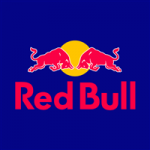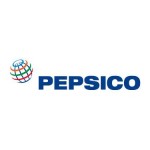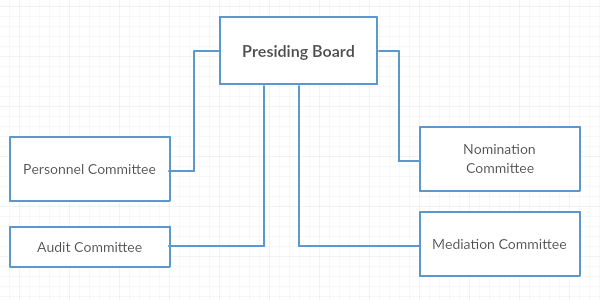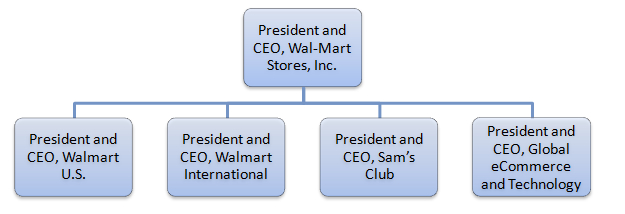Leadership

eBay leadership at the most senior position has been assumed by only four people since its establishment in 1995 by 28-year-old Pierre Omidyar. By June 1996 the company had USD10,000 in monthly revenues and its first employee and it secured a multi-million dollar round of venture capital funding the next year.[1] Aware of his entrepreneurial and leadership limits, Omidyar brought in Meg Whitman who oversaw IPO, international expansion, numerous acquisitions including PayPal, and several well-publicized site crashes. Meg Whitman stepped down as eBay CEO and President to run for the office of the Governor of California in 2008 and eBay leadership was assumed by John Donahoe. During the times he was in charge, Donahoe was seen as effective leader and turnaround manager. He was against the split of PayPal from eBay and unable to prevent the split, Donahoe had to step down on July 2015. It has been noted that “the changes implemented during John Donahoe’s tenure have proven to be controversial as shifts in rules and fees structures and an increased orientation toward high-volume, fixed-price retail channel selling have alienated portions of eBay’s traditional community even as the competitive landscape around eBay stiffens”[2] Today, Devin Wenig is the President and CEO of eBay Inc. and the executive leadership team comprises 13 members. There are 11 members in the Board of Directors comprises 11 members, including eBay founder Pierre Omidyar. The role of the Chairman of the Board is currently held by Thomas J. Tierney. Currently, eBay leadership is faced with a challenge of declining business growth. During 2015 – 2016 holiday season “sales grew an estimated 4.8 percent, which is way below the 13.3 percent typical for ecommerce companies”[3] The leadership of Devin Wenig can be criticized for the lack of clear strategy and competitive advantage for eBay. Plans…

Referred to as “the inn keeper of the world” Hilton Hotels founder Conrad Hilton was a visionary leader and his values echoes on the current leadership practices at Hilton to a certain extent. Christopher J. Nassetta is Hilton Worldwide President and CEO and has been recognized as the CEO of the Year 2014 by Washington Business Journal for his rigorous approach to everything and motivational leadership style.[1] Hands-on approach is another important aspect of leadership at Hilton promoted by its President and CEO Nassetta. For example, the initiative known as ‘immersion’ “requires every corporate manager to spend three days a year on the front lines — cook, housekeeping, front desk — to get a feel for the customers”.[2] The position of Chairman of the Board of Directors is currently held by Jonathan D. Gray. Hilton Worldwide Executive Committee has 13 members and there are eight members in Hilton Worldwide Board of Directors. Autonomy for decision making is an important feature of Hilton leadership practices. Employees at all levels go to great lengths to meet and exceed customer expectations and employees very seldom ask for permission from their superiors to address customer requests, even when these requests are unusual. Beyond making independent decisions, the members of Hilton team are vested with the power to make the difference, to give others a powerful reason to want to come back to them when a need developed.[3] Diversity represents another critically important value at Hilton with direct implications on leadership practices at all levels. Hilton CEO and President Nassetta states “I have a very simple philosophy on diversity: It is what allows us to perform and deliver for our customers and, frankly, outperform the competition”[4] At present, Hilton Worldwide leadership is assigned with the challenging task of maintaining the competitive advantage amid increasing costs…

Red Bull leadership team is headed by Dietrich Mateschitz, its co-founder and long-time CEO, since its establishment in 1987. Visionary and effective leadership style of Dietrich Mateschitz is one of the major factors that fuelled the rapid growth of the business to the point of its current leadership position in the global scale. Dietrich Mateschitz had to challenge the status quo and sceptical views towards the business multiple times during his tenure as Red Bull leader. It has been noted that Dietrich Mateschitz “eschews bureaucracy and famously rejected the recommendations of a market research report which advised to him to not even try to launch an energy drink”[1]. Similar to Richard Branson of Virgin, Dietrich Mateschitz has succeeded in personification of the business and performed the role of brand ambassador in an efficient manner. Thanks to his personal interest in extreme sports and relentless drive to succeed, Mateschitz was able to create a market for Red Bull when none existed and associated the brand with extreme sports and high performance. Currently, Red Bull leadership is faced with the challenges of addressing the claims and instances related to negative health implications of Red Bull consumption. It can be argued that the relevance of this specific channel is greater than ever before due to increasing level of consumer health-awareness. Another leadership challenge in Red Bull relates to a potential leadership succession issue. To be more specific, there is no there no evident candidate to take over 72-year-old Dietrich Mateschitz the leadership role at Red Bull and such a ambiguity may threaten the company’s post-Mateschitz growth prospects. Red Bull GmbH Report constitutes a comprehensive analysis of Red Bull business strategy. The report illustrates the application of the major analytical strategic frameworks in business studies such as SWOT, PESTEL, Porter’s Five Forces, Value Chain…

British Airways leadership reports to International Airline Group (IAG), its parent company that also owns Aer Lingus, Iberia and Vueling. The Leadership Team is made up of the Executive Directors and other key management personnel and is responsible for the day-today running of the Group and discharging managerial responsibility. British Airways Chairman and Chief Executive Keith Williams was replaced by Vueling’s Chairman and CEO, Alex Cruz in April 2016[1]. British Airways Board of Directors comprises 10 members and each director overseas a specific aspect of the business. IAG Chief Executive Officer Willie Walsh has previously served as British Airways CEO and he had the greatest impact on the airline than any other CEO before or after him up to date. Once nicknamed as ‘Slasher Walsh’ for his relentless drive to cut costs, Willie Walsh was also known for his uncompromising stance in dealing with unions.[2] Currently, IAG leader is in a controversial dispute with the government over the lack of runways in Heathrow airport. Mr Walsh has threatened that “if the government continues to dither over a new runway, then I’ll move my business elsewhere”[3]. Moreover, British Airways leadership is faced with a complex set of challenges that include intensifying level of competition from budget airlines, increasing uncertainty in the business environment and the threat of terrorist attacks. The range of initiatives implemented or being considered by British Airways leadership to address these issues include the following: Starting charging for meals in economy class on short-haul flights[4] Reducing the scope of expansion plans following attacks in Brussels in April 2016 British Airways Report constitutes a comprehensive analysis of British Airways business strategy. The report illustrates the application of the major analytical strategic frameworks in business studies such as SWOT, PESTEL, Porter’s Five Forces, Value Chain analysis and McKinsey 7S Model…

Tesco leadership had to change following a major scandal in 2015 that involved the cases of supplier mistreatment and profit mis-declarations as revealed by BBC’s Panorama.[1] John Allan has been elected as a new Chairman of the Board and Dave Lewis, who once was a supplier for Tesco has been appointed as the new CEO to lead a new senior management team. Restoration of trust of stakeholders in general and consumers and suppliers in particular has been announced as the main strategic task by the new management. The new leadership has introduced a new Code of Business Conduct, supported17 by a company-wide training programme along with other measures in order to prevent wrongdoings in the future. Simplification of the business has emerged as another main priority for the new management team. Range of initiative declared by Tesco leadership also include concentrating on “availability, service and selectively on price; undertaking a significant programme of restructuring and financial discipline; and launching a programme of renewal to restore trust in every aspect of the brand”[2] The new management aims to address supplier relationship issues proactively and it has established new Supplier Helpline, designed to resolve payment and administrative issues quickly and simply.[3] The first ‘outsider’ to lead Tesco since its foundation in 1919, Dave Lewis has been able successful so far as a CEO with his drastic measures that included “selling Blinkbox entertainment arm; slashing up to 10,000 positions and shutting stores; closing down Cheshunt and putting its GBP1bn Clubcard data business Dunnhumby and its South Korean arm up for sale. A new deal is reportedly on the table with staff to end its costly defined-benefit pension scheme, worth GBP3bn.”[4] Tesco PLC Report constitutes a comprehensive analysis of Tesco business strategy. The report illustrates the application of the major analytical strategic frameworks in business…

PepsiCo leadership of six divisions have nearly 140 years of combined PepsiCo experience across multiple categories, markets and functions[1]. PepsiCo Board of Directors comprises 15 members with Indra K. Nooyi serving as Chairman of the Board and Chief Executive Officer. The name of Indra Nooyi is on every list of top female leaders around the globe and she is widely acknowledged as a charismatic and effective corporate leader. PepsiCo leadership can be assessed as strong and dynamic and this has been reflected on strong financial performance of the company over the years. Despite an evident effectiveness of PepsiCo leadership, a lack of clarity on CEO succession plan can be specified as a noteworthy issue. Specifically, a number of reputable members of senior management team and rising starts have been leaving PepsiCo recently. These include the departure of Enderson Guimaraes executive vice president for Global Categories and Operations, the Pepsi President John Compton, former nutrition head Debra Crew and former president Zein Abdalla. It has been noted that “when questioned about the string of high-level departures, PepsiCo has consistently pointed to its status as a well-known supplier of executives to other companies, a talent factory of sorts”.[2] Nevertheless, this tendency may cause CEO-succession-related problems in long-term perspectives. PepsiCo organizational structure can be described as divisional and it integrates the following divisions: Frito-Lay North America (FLNA). Quaker Foods North America (QFNA). Latin America Asia, Middle East & North America (AMENA). Europe & Sub-Saharian Africa (ESSA). North America Beverages (NAB). Each division is led by a divisional CEO, who report to PepsiCo CEO and Chairman Indra K. Nooyi. Besides divisional CEOs, PepsiCo leadership team comprises the following positions: Executive Vice President, Communications President, North America Nutrition Senior Vice President, Chief HR officer for Human Capital Management Services and Operations Senior Vice President and…

BMW leadership structure and BMW organizational structure is highly complex reflecting the massive size of the business and the global scale of its operations. BMW AG Supervisory Board sits on the top of the organizational structure and there are 20 members organized into four different committees (see Figure 1 below). BMW AG Supervisory Board had five meetings in 2015 and each meeting usually addresses a set of issues of a strategic nature. Figure 1 BMW AG Supervisory Board Committee One step below the Supervisory Board, there is BMW AG Board of management which comprises 8 members. The Board is led by Harald Krüger, who became the new Chairman of the Board of Management on 13 May 2015. The Board of Management directly supervises BMW Group Compliance Committee and this committee comprises the heads of the following six departments: Legal Affairs, Patents Corporate and Governmental Affairs Corporate Audit Organizational Development Group Reporting Corporate HR, Strategy and Targets The BMW Group Compliance Committee operates through the BMW Group Compliance Committee Office with ten staff members based at the Group’s Munich headquarters. Its tasks are divided into two areas: “Compliance Development and Services” and “Group Compliance Operations“. The BMW Group Compliance Committee Office is assigned to the Chairman of the Board of Management for organizational purposes.[1] The Figure 2 below illustrates the pattern of BMW Group compliance system. Figure 2 BMW Group compliance system[2] BMW Group organizational structure also integrates the components of project-based structure. This is especially true for projects related to research and development and the launch of new vehicle series… BMW Group Report constitutes a comprehensive analysis of BMW business strategy. The report illustrates the application of the major analytical strategic frameworks in business studies such as SWOT, PESTEL, Porter’s Five Forces, Value Chain analysis and McKinsey 7S Model on…

Traditionally, Walmart leadership attempts to integrate the values of its founder Sam Walton into the organizational culture in order to improve employee morale with positive implications on the bottom line. In 1988 the roles of Chairman and CEO were separated and today these roles are performed by Gregory B. Penner and Doug McMillion respectively. Doug McMillion has assumed Walmart leadership position in February 2014 and a range of initiatives introduce by the new CEO include enhancing the priority for customer services via employee training and development and increasing wages of floor-level employees and focusing on improving nutritional aspects of foods. Walmart leadership academy, instituted in 2009 aims to accelerate the preparedness of leaders and is modelled after the Royal Military Academy Sandhurst[1] Walmartorganizational structure is highly hierarchical due to the massive size of the company. In other words, the company employs about 2.2 million people globally[2] and therefore, there is no alternative organizational structure for Walmart to ensure effective management of such a large number of employees.The Board of Directors consists 16 members and it includes two members of Walton family, as well as, young, but proven business executives such as Kevin Systrom, CEO and Co-Founder, Instagram and Marissa A. MayerPresident and CEO of Yahoo!, Inc. Walmart organizational structure at the very top executive has a pattern as illustrated in Figure 1 below: One step down the hierarchy form the above, Walmart executive team comprises 29 senior managers for the following roles: Executive Vice President and Treasurer Executive Vice President, Softlines and General Merchandise, Walmart U.S. Executive Vice President, Corporate Affairs Chief Operating Officer, Global eCommerce Executive Vice President and Chief Financial Officer Chief Merchandising Officer, Walmart U.S. Executive Vice President, Global People Division Executive Vice President and Chief Financial Officer, Walmart U.S. Executive Vice President, Chief Administrative Officer Executive…

Leadership can be explained as “the relationship in which one person influences others to work together willingly on a related task to attain goals by the leader or group” (Sekhar, 2010, p.46). Nowadays, the importance of leadership may be greater than ever before due to high levels of competition and increasing difficulty in sustaining competitive advantage. John Adair’s (2011) eight functions of leadership presented below have great impact on team effectiveness and therefore they need to be conducted appropriately: Defining the task. Tasks need to be defined according to SMART principle and this abbreviation is interpreted as specific, measurable, achievable, realistic and time-bound. Planning. Plans need to incorporate provision for unforeseen circumstances, which has become an evitable part of modern markets. Briefing. It is one of the most important responsibilities of a team leader to specify roles and responsibilities of each individual team member and clarify points of concern for team members during the briefing. Controlling and coordinating. This function needs to be conducted in a regular and systematic manner. Evaluating. It is important for evaluations to be conducted in an objective manner and team members should be provided with an honest feedback. Supporting. Leaders need to support the team with all necessary resources, as well as, guidance and advice in relation to critical aspects of team projects. Motivating. Effective application of tangible and intangible motivational tools can be justly specified as one of the critical success factors of efficient leadership. Tangible motivational tools to be offered to employees include cash and other forms of material benefits. Alternatively, intangible motivational tools may include formally or informally praising individual employees or teams for their contribution, organising celebrations of group achievements etc. Setting an example. Leaders to be become role models in expressing the role of importance of organisational values and adherence…

According to Horn (2013), although many people have certain opinions about emotional intelligence, the numbers of definitions of the term may be equal to the numbers of authors who addressed this issue. Emotional intelligence has been defined as “the potential to be aware of and use one’s own emotions in communicating with oneself and others and to manage and motivate oneself and others through understanding emotions” (Wharam, 2009, p.11). Alternatively, Bradberry and Greaves (2009) define emotional intelligence as the ability of individuals to understand, express and control their emotions. According to Barrows and Powers (2009) as taken from Oxford English Dictionary hospitality means “the perception and entertainment of guests, visitors or strangers with liberality and good will” (Barrows and Powers, 2009, p.4) Chakraborty and Konar (2009) identify four important attributes of emotions as intensity, brevity, partiality and instability. Intensity relates to the extent of strengths of emotions. Brevity, as an important attribute of emotion relates to its duration. Partiality, on the other hand, is a target such as person or object towards whom or which emotion is directed. Lastly, instability relates to transient psychological and physiological processes experienced by people. According to Bradberry and Greaves (2009) emotional intelligence accounts for 58% of performance for all kinds of jobs. However, Bradberry and Greaves (2009) do not explain methods used to obtain this specific figure and this fact compromises the value and validity of their claim. Moreover, according to Bradberry and Greaves (2009) the levels of personal competence are based on self-awareness and self-management, whereas social competence is based on social awareness and relationship management. Four components of emotional intelligence Source: Bradberry and Greaves (2009) According to Sparrow and Knight (2009) emotions are associated with physiological change such as acceleration of the rate of heartbeat, changes in blood pressure and facial expressions,…
